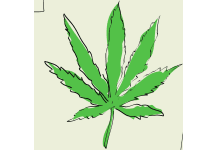As we move into a new era of legalised cannabis, it is useful to remember that this is not the first time Ontario has had to create structures to deal with a newly-legalised product. In 1926, G. Howard Ferguson, Premier of Ontario, Kemptville native and one-time Reeve of the village, created what can only be described as a social and political explosion. Ferguson had spent almost his whole life in politics, and was very conscious that one issue in particular was dominating Ontario life – alcohol. In 1916, at the height of the First World War, the Ontario Temperance Act [OTA] had been introduced to deal with what was universally considered a major social problem. The Temperance movement, essentially a campaign to introduce complete prohibition of the sale and consumption of alcohol, was a powerful popular crusade from the 1880’s on. The movement was prompted more by anger at domestic violence and poverty caused by excessive drinking than by simple intolerance. Gradual moves towards prohibition had been taken from the 1890’s, when municipalities were given the option of voting to keep their areas “dry”. Today, municipalities are being given the choice of whether to have pot shops in their area, and how many to allow. But the “Local Option”, as it was called, seemed to be a never-ending issue, with votes being taken again and again on whether to stay “dry”, or go “wet”. Perhaps that will be the case with municipal decisions regarding cannabis?
The Provincial election of 1926 was fought on the issue of government control of liquor sale and distribution, and it is very hard to imagine the depth of feeling expressed in that campaign. It was fierce and deep. Ferguson won the election handily, and the direct result was the establishment of the Liquor Control Board of Ontario, the LCBO.
This was not, however, the LCBO we know today. Ferguson was dealing with extreme views and had no intention of simply throwing open the consumption of alcohol to the public without restriction. He believed in personal freedom, but also in the responsibility of government to regulate public morality. People would only be allowed buy alcohol from Government-run outlets, and only under licence. Ferguson was quite clear about the limits: “The man who is abusing the privilege or who misconducts himself will have the privilege taken away from him…all persons found with liquor for which they cannot produce their permit will go to jail”.
This was no idle threat. Between 1927 and 1962, individuals had to hold a licence in order to buy alcohol in the same way that a licence is needed to drive a car. Until 1957, these licences came in booklet form. This contained the holder’s name and address, marital status, employer’s name, and a record of what had been bought. If a store operator felt that an individual was buying (or consuming) too much, he could refuse to sell them any more. Every time you bought alcohol, you had to hand in your licence, along with an order form, which could be examined to ensure you were not “abusing your privilege”. Between 1957 and 1962, the booklet form of the licence was replaced by a permit card, something still remembered by those old enough. The order forms, which had to be filled in for each purchase, continued in use until the 1970’s, when the public were first trusted enough to pick their purchases off shelves themselves.
But the “Control” part of the Liquor Control Board went much further than simply regulating the purchase itself. Under the Act setting up the LCBO, investigators were authorised to establish an “interdiction list”, naming those who had been found abusing the system. These lists were circulated to all liquor stores, as well as to local police forces, as it was a criminal offense for people on the interdiction list to be in possession of alcohol. From 1929, the LCBO could refuse service to anyone on social assistance, or for whatever reason they chose. After bars were allowed to serve glasses of beer in 1934, licensed establishments had to follow strict regulations which included restrictions on singing, the number of patrons allowed to sit together, and the separation of female from unmarried male customers. Women visiting bars were only allowed to drink in a separate Ladies Room, and only in the presence of an official male chaperone.
These “good old days” seem quite shocking to Canadians today, and it is quite surprising how recently these regulations were in force. It was not until 1955 that the residents of Kemptville voted to allow a Liquor Store and Beer Store to open in their town. These opened in 1957. But it was another nine years before the vote was cast in favour of allowing hotels and restaurants to serve alcohol on their premises. Things get forgotten quite quickly, it seems, and the remarkable restrictions on the sale and consumption of alcohol by private citizens in Ontario seem to belong to another age, or another society. Perhaps they do. The cannabis issue may tell us.







